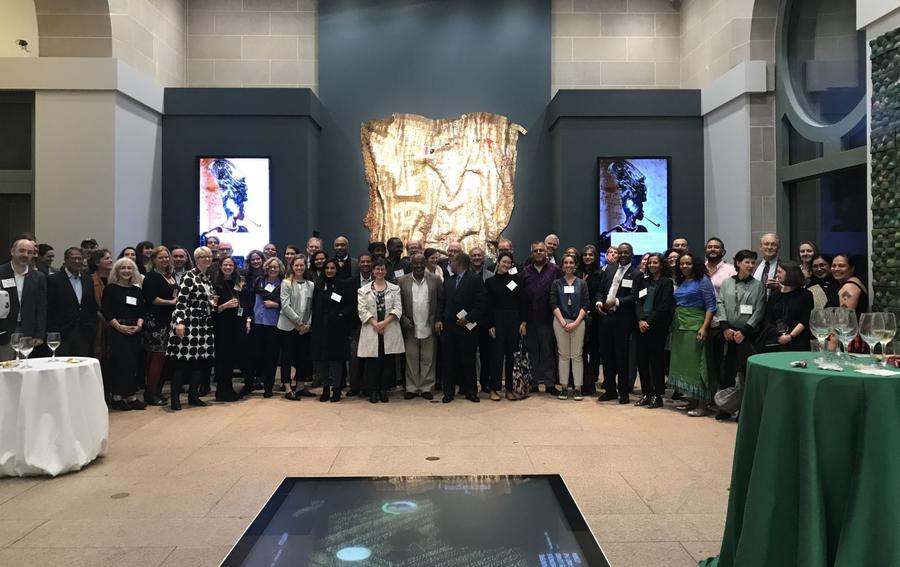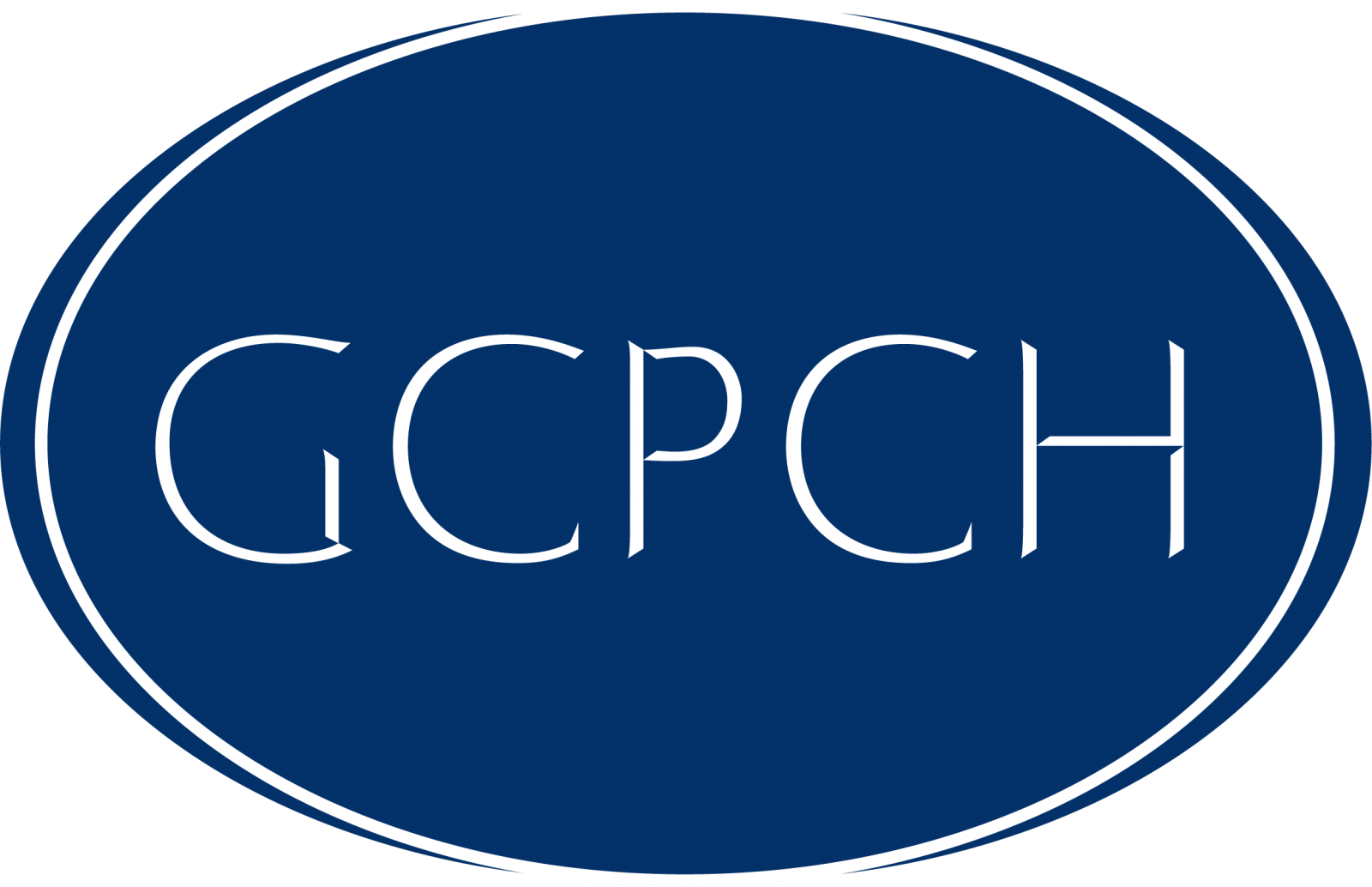The Third Annual Meeting of the Global Consortium for the Preservation of Cultural Heritage was cohosted by Yale University and the Smithsonian Institution on October 21 & 22, 2019 at the Smithsonian’s Hirshhorn Museum in Washington, DC.

——————————————————————————————————————————————
The preservation of cultural heritage is one of the grand challenges of the contemporary world. The goal of the consortium is to enable the global university, education, and research community to make a transformative contribution to the preservation of cultural heritage, through broad educational programs, major collaborative research initiatives, and effective engagement and advocacy.
This year’s meeting put a special emphasis on discussion of important topics of interest to university and museum professionals. The theme–Museum Communities and Equity–invites participants to explore a range of issues including investigating the role of diverse communities in determining how their heritage is identified, protected, and managed; understanding the needs of the museum and cultural sectors in Africa; and developing creative engagement between cultural institutions and the communities whose heritage they maintain.
This provisional “think piece” reflects our shared understanding of the field, and the challenges and opportunities we face.
——————————————————————————————————————————————
Program Schedule
MONDAY, OCTOBER 21
9:00 AM — Opening Remarks
Michael Atwood Mason, Director, Smithsonian Center for Folklife and Cultural Heritage (US)
Susan Gibbons, Vice Provost for Collections and Scholarly Communication, Yale University (US)
Gus Casely-Hayford, Director, National Museum of African Art (US)
10:00 AM — Keynote
Cultural Heritage is Climate Action. Climate Action is Cultural Heritage. Integration for Greater Ambition
Julianne Polanco, California State Historic Preservation Officer, California Office of Historic Preservation (US)
10:45 AM — Session: Educating the Next Generation of Cultural Heritage Professionals
This session will present an inventory of learning resources as well as some examples of training and collaboration. More importantly, there will be time to discuss how the consortium can pursue its goals in the best way. One of the goals is to facilitate preservation of cultural heritage through education and training, and, to that end, the role of the consortium is to act as a catalyst for collaboration and exchange of resources among the members. At the same time, it may also consider creating a series of minimum standards in the imparting of training in heritage conservation. According to its charter, the consortium aims to develop the preservation of cultural heritage as a trans-disciplinary academic discipline by establishing educational academic exchanges and by creating common learning tools and modules of well-defined standards.
Moderator’s Introduction
Tor Broström, Professor of Art History, Uppsala University (Sweden)
Anupam Sah, Art Conservation Practitioner, Strategist, and Educator (India)
Global Survey of Educational Resources in Conservation
Anupam Sah, Art Conservation Practitioner, Strategist, and Educator (India)
Starting a New Conservation Program in Africa: Lessons Learned
Isabelle McGinn, Lecturer, School of the Arts, University of Pretoria (South Africa)
Hack for Heritage: A Swedish project aiming to attract students from other educational fields
Tor Broström, Professor of Art History, Uppsala University (Sweden)
Processes, Platforms: Praxis in Art Education
Deepika Sorabjee, Head-Arts and Culture, Tata Trusts (India)
Learning from the Ancestors in Storage: Teaching the Conservation of Cultural Heritage to Non-Specialists at the Johns Hopkins Archaeological Museum
Sanchita Balachandran, Associate Director, The Johns Hopkins Archaeological Museum (US)
Discussion: What we do together to facilitate education of the next generation of cultural heritage professionals
1:00 PM — Lunch
2:00 PM — Session: Collections and Communities
This session explores how museums can best collaborate with communities in the selection and management of collections. The role of museums has been changing consistently since the 1960s. Although they continue their traditional activities of preservation, curation, public programming, and education, new questions have emerged: how do museums contribute to sustainable development and the communities to which they belong? The concept of community has been understood in different ways within the social sciences since 1960, and now museums, as trustworthy organizations, have been asked to foster dialogue, build bridges, and increase mutual understanding in a variety of contexts—becoming platforms where creativity combines with knowledge. Communities co-create, share, and interact around the value of museum collections, both as cultural goods and their intangible assets. This participatory approach has impacted the heritage sector, as museums and their collections are perceived as collectively owned property and memory. Responsible to multiple parties, museums can no longer assert a single way of understanding the preservation of cultural heritage, either tangible or intangible. However, a participatory approach has real limits that arise when there are power and economic imbalances, a history of indifference by authorities, or deep-rooted cultural prejudices. How do we build a shared vision for a collection and its many meanings? For example, should we talk about “community” or “communities” when preparing an exhibition? Similarly, we must contemplate how to reinforce the bonds of specific groups in a local or community-based museum, where they often depend on their heritage to assert their identity. How do universities, their museums, and communities collaborate? And what are the best strategies to articulate knowledge-building and knowledge-transfer to communities? Conversely, national and large-scale museums face unique challenges of engagement with their “communities.” What role does digital play in this regard?
Moderator’s Introduction
Marisol Richter Scheuch, Director of the Program in History and Cultural Heritage Management, Universidad de los Andes (Chile)
The Value of Use: Conservation Practice Informed by Community Needs
Heidi Swierenga, Senior Conservator and Head of Collections Care and Access, Museum of Anthropology, University of British Columbia (Canada)
Shared Stewardship at Smithsonian: A New Policy at the Center for Folklife and Cultural Heritage
Robert Leopold, Deputy Director for Research and Collections, Smithsonian Center for Folklife and Cultural Heritage (US)
The Concept of the Museum and the Role of Community Museums and Ecomuseums
Karen Brown, Senior Lecturer in Art History & Museum and Gallery Studies; Director of the School’s Museums, Galleries, and Collections Research Institute, University of St. Andrews (Scotland)
Smithsonian Projects in Iraq
Katharyn Hanson, Secretary’s Scholar, Smithsonian Institution (US)
Potential of Community-Based Museums to Foster a Shared Sense of Equity and Local Identity
Karin Weil, Director, Researcher and Project Manager, Museology Department, Universidad Austral de Chile (Chile)
Museum Practice and the Intersection of Disability with Collections and Community
Beth Ziebarth, Director, Smithsonian Accessibility Program (US)
Discussion
5:30 PM – Closing Remarks/Logistics – Michael Atwood Mason
6:00 PM — Dinner at Freer/Sackler Museums
Remarks
Peter Salovey, President, Yale University (US)
John Davis, Provost, Smithsonian Institution (US)
TUESDAY, OCTOBER 22
9:00 AM — Session: Material Culture and Community Participation in Intangible Cultural Heritage
The contemplation of museum communities and equity opens a vast conversation on the relationship of material culture collections to the people who make, preserve, use, and identify with those objects. A panel discussion with four presentations will provide substantive critical inquiry into the intersection of material culture and community participation. Museum professionals and cultural brokers working with intangible cultural heritage have developed a range of strategies to ensure community participation: community-based exhibition development, oral history documentation of collections, and programming that foregrounds community voices and perspectives, to name a few. Increasingly, researchers and communities are uniting to develop and implement collaborative research and collection efforts, where the very questions posed, the methods used to gather information, and the form of the research outputs are developed jointly. As communities worldwide become more intensely engaged in heritage management, they have sought an increasingly active role in conceptualizing, protecting, and developing their heritage assets. What are the emerging models that combine material culture and community participation? How do we represent, protect, and transmit the cultural knowledge that gives rise to the creation of material culture collections? How do cultural preservation institutions ensure the fair representation of a given community? Which forms of community participation have the most lasting impact? How do we ensure equity in the benefits that heritage generates for communities with their many internal differences?
Moderator’s Introduction
Michael Atwood Mason, Director, Smithsonian Center for Folklife and Cultural Heritage (US)
Arts, Language, Culture: Smithsonian Indigenous Heritage Collaborations in Alaska
Aron Crowell, Alaska Director, Smithsonian Arctic Studies Center (US)
Connecting the Tangible and Intangible Through Collections Access at the National Museum of the American Indian
Kelly McHugh, Objects Conservator, National Museum of the American Indian (US)
Building a Craft Ecology: A Case Study of Cultural Heritage Work in Armenia
Halle Butvin, Director of Special Projects, Smithsonian Center for Folklife and Cultural Heritage (US)
Travelling Forward into our Past and Backward into our Future, Both in the Present: A Talanoa Around Privileging Indigenous Knowledges and Practices
Barbara Makuati-Afitu and Kolokesa U. Māhina-Tuai, Co-Founders, Lagi-Maama Ltd. (Samoa, Tonga and Aotearoa New Zealand)
Engaging, Educating, and Empowering Through Material Culture and Community Cultivation
Mary Elliot, Curator of American Slavery, Smithsonian National Museum of African American History and Culture (US)
12:00 PM — Lunch
1:00 PM — Session: The Future of the African Museum Sector
Africa’s art museum sector is changing. A new generation of museums is opening, and another is being envisioned. This session convenes a group of our peers and partners to discuss how we can better coordinate to deliver the changes we would like to see. The continent’s artists, commercial galleries, and dealers have become some of the most sought after at international art fairs. Historic African art is in demand and fetching record prices. This current renaissance has happened as museums and governments in Europe and America reconsider historic collections of African art. Many institutions are openly discussing ideas of restitution, return, and deeper curatorial partnerships with African peers. Yet, as this happens, much of the state-sponsored African museum sector is struggling with failing infrastructure, diminishing resources, and lack of additional support and professional development for personnel. There is a generational opportunity to face this chronic challenge: a chance to negotiate new ways of working better together, invest in mechanisms for improved sectoral communication and exchange, develop shared goals, and forge a basis for better future collaboration. Rarely have we faced such a favorable landscape in which change is categorically less challenging than stasis. There has never been such an exceptional opportunity for us to adjust the model of our discipline, to change the nature of ambition and the very tenor of what we do.
SESSION 1: The Nature of the Challenge: A consideration of institutional, regional, and sectoral progress, challenges, needs, and opportunities
Moderator: Gus Casely-Hayford, Director, National Museum of African Art (US)
Participants:
Charlotte Ashamu, Associate Director for Advancement & External Affairs, National Museum of African Art (US)
Athman Hussein, Assistant Director, National Museums of Kenya (Kenya)
Daudi Karungi, Director, Kampala Biennale (Uganda)
Asif Shaikh, Development professional, Chair Emeritus, Advisory Board, National Museum of African Art (US) [TBD]
3:00 PM — Break
3:30 PM — The Future of the African Museum Sector: Strategies
SESSION 2: Future Possibilities and Bold Ambitions: A discussion of opportunities, constraints, and strategies to reach where we’d like to be in the future
Moderator: Chris Mullen Kreamer, Deputy Director and Chief Curator, National Museum of African Art (US)
Participants:
Tumelo Mosaka, Independent Curator (South Africa)
Sam Nixon, Head of the Africa Section, British Museum (UK)
Ciraj Rassool, Professor, University of the Western Cape (South Africa)
Andrew Skipper, Hogan Lovells LLP and Vice-Chair, Advisory Board, National Museum of African Art (US)
Ahmed Zekaria, Chief Curator, Institute of Ethiopian Studies (Ethiopia)
5:30 PM — Closing Remarks/Call to Action – Gus Casely-Hayford
6:15 PM — Reception at National Museum of African Art
